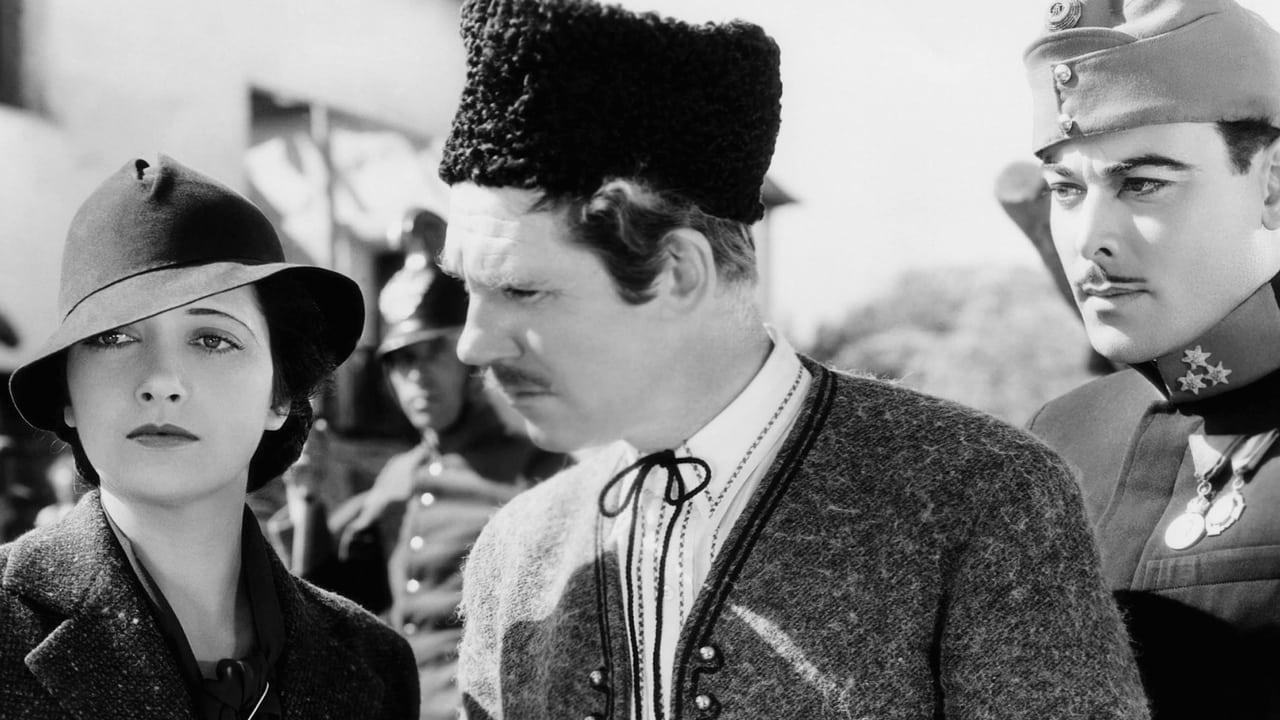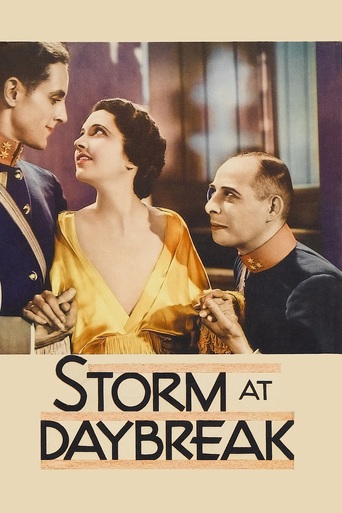Salubfoto
It's an amazing and heartbreaking story.
Brendon Jones
It’s fine. It's literally the definition of a fine movie. You’ve seen it before, you know every beat and outcome before the characters even do. Only question is how much escapism you’re looking for.
Kamila Bell
This is a coming of age storyline that you've seen in one form or another for decades. It takes a truly unique voice to make yet another one worth watching.
Payno
I think this is a new genre that they're all sort of working their way through it and haven't got all the kinks worked out yet but it's a genre that works for me.
mark.waltz
It's 1914, and a town festival is interrupted by the arrival of the Archduke and Duchess who are promptly assassinated, erupting Austria-Hungary into war with the Serbs. For town mayor Walter Huston, this brings on another crisis, as his officer pal Nils Asther falls deeply in love with Huston's wife, the noble Kay Francis. For years, Francis and Asther manage to avoid each other, often causing Huston to believe that his wife resents their friendship, but as the political climate changes, secret come out, betrayals are revealed, and a sacrifice must be made, not only to save a friend, but to aide the political climate as well.This is a complicated almost operetta like tale of an affair that is more stolen kisses than sexual lust, as Asther and Francis remain loyal to both their friendship and marriage to Huston, even though it's obvious that Francis isn't deeply in love with her husband, even at the beginning. The film starts off literally with a bang, slows down tremendously as the details of the love between Asther and Francis are revealed, but explodes suddenly into the lavish fiesta where rich and poor mingle together, dancing furiously to the music of the happy gypsies as flowers fly, kisses are stolen in secret, champagne corks pop and the food turns the revelers into gluttons. But behind that celebration, there are more than just land wars going on, and when this takes on the serious dilemmas, it becomes nearly a landmark work of art.For comical relief, there's Louise Closser Hale as Huston's much older sister and Eugene Palette as Asther's right-hand man who seem to have a secret past. Ms. Closser Hale admonishes Palette for his ogling nature then slyly invites him into her kitchen. Jean Parker, as Hale's daughter, is seen only briefly, so by the time she re- appears for one major scene, it's almost forgotten that she was ever on before. The film drags in a few spots that almost brought my rating of it down, but once it builds up to a high crescendo of the huge party scene and all the drama that occurs afterwards (particularly Huston's realization of what has gone on all along), it settles into a fine film. As one of only four films that Francis made for MGM during her career (on loan), it shows her in a beautiful light, particularly the scenes with her and Asther's close-ups framed by candles as if to say that the flame was flickering with tremendous heat.
MartinHafer
"Storm at Daybreak" SHOULD have been an exciting movie. After all, MGM put a lot of money and effort into this...going so far as borrowing one of the top stars of the day, Kay Francis, from Warner Brothers, to make this film. Although it has some good moments, however, it's a sluggishly paced and dull film.The film begins on a very strong note, as the assassination of Archduke Franz Ferdinand and his wife is recreated in a very realistic and graphic manner. This event led to the outbreak of WWI and the rest of the film is about the Serbians during this time. Mayor Dushon Radovic (Walter Huston) is a loyal servant of the Austrio-Hungarian Empire...but he also is worried about the mistreatment of his people by the hated Hungarians. So he tries to balance his duty with his patriotism. At the same time, his wife Irina (Kay Francis) has decided to take a much more active role in defending her Serbia by hiding wanted Serbs. At the same time, Captain Geza is trying to find these wanted men AND he's become captivated with the Mayor's wife.The scenes between Geza and Irina should have been smoldering but instead were just dull...the root of the problem in the film. It should have looked more like a romance than it was...but instead just limped along to the ultimate finale.
westerfield
I've been wanting burn a DVD of this film since I saw it about a year ago on TCM. Finally had the chance today. It's another Boleslavski film where every frame is art - see Fugitive Lovers. No one - not even Von Sternberg photographing Dietrich - took more care is setting the scene. Lighting, foreground, background, focus, all show a master's touch. Even the quick cuts of a second or less show the love affair of a man with his art. And just about every supporting villain in Hollywood is in it: C. Henry Gordon, Lucien Prival, Mischa Auer, Akim Tamiroff, Leonid Kinskey and Charles Halton (almost all uncredited). And not even mentioned in IMDb: J. Carroll Naish as an assassin. The rousing coach ride finale is a precursor to The Body Snatcher's and almost as good. Overall a schmaltzy Kay Francis vehicle made palatable by a great director. The film shows Boleslavski's versatility: here an epic versus Fugitive Lovers where almost everything happens on a bus. Too bad he died so early.
Ron Oliver
Like a violent STORM AT DAYBREAK, the events surrounding the Great War burst upon the love of a Serbian mayor's wife & a dashing Hungarian cavalry commander.Although undeservedly forgotten & overlooked for decades, this is a splendid example of the kind of quality MGM was able to lavish even on films destined for obscurity. The production values are perfect, with lush costumes & sets and crowd scenes that look absolutely natural. This all did not happen by accident. MGM had a tremendously talented & dedicated workforce which excelled in producing remarkable historical reproductions for the screen. The dramatic assassination sequence with which the film opens is particularly well conceived.Kay Francis & Swedish-born Nils Asther play the innocent lovers, tenderly exploring their attraction while remaining true to moral standards. Walter Huston, oddly billed below the title, dominates his every scene as an emotional husband who trusts his wife & best friend until he feels betrayed. They make an unusual & compelling romantic triangle, although the final 10 minutes of the film puts them through quite a histrionic wringer.Phillips Holmes has a small, vivid performance as a drunken, lovesick Hungarian officer. (As a member of the Canadian Air Force, this fine, forgotten actor would be the first Hollywood celebrity to die in World War Two, in 1942 at age 35.) C. Henry Gordon plays a nasty Serbian villain who stirs things up a bit at the climax. The comic relief is handled most deftly by Eugene Pallette as an obese Hungarian soldier and the wonderful Louise Closser Hale as Huston's elderly sister. Their scenes together fan the spark they ignited at Paramount in SHANGHAI EXPRESS (1932). Tragically, Mrs. Hale would die later in 1933 of heat prostration. She was only 60 years old.Movie mavens will recognize Clarence Wilson as a sour-faced Hungarian officer; Mischa Auer as the Assassin; and Akim Tamiroff as an exuberant gypsy violinist - all in uncredited roles.* * * * * * * * * * * * * * * * * * * * * * *Now for a little historical background. Archduke Franz Ferdinand (1863-1914) became the heir to the Austro-Hungarian throne following the suicide of his cousin Rudolf in 1889 & the death of his father, the Archduke Charles Louis, in 1896. He upset his uncle, Emperor Franz Joseph, and the rest of the royal family, by falling in love with one of the Czech ladies-in-waiting, Sophie, Countess von Chotek & Duchess von Hohenberg. Their morganatic marriage in 1900 meant any children from their union would never ascend the throne. The Archduke became very interested in political & military matters, often pestering the old Emperor with his ideas. One of his more radical notions was the reorganization of the Empire and the creation of a new Kingdom of Croatia. It was this which earned him the enmity of the Serb nationalists living in the Empire, although privately the Archduke was sympathetic to Serbian sensitivities. It was his official role as Inspector General of the Imperial Army that brought 50-year-old Franz Ferdinand & Sophie to Sarajevo, in Bosnia, on June 28, 1914.Gavrilo Princip (1894-1918) was only 19 years of age on that fateful Summer day. Raised in a fiercely patriotic Serbian home, he had been trained as an assassin & terrorist by the dreaded Serbian secret society, the Black Hand. In order to gain his objectives, he believed his act of defiance should be notable; the murder of a Habsburg would be just the thing. During the Archduke's procession through Sarajevo, one of Princip's coconspirators threw a bomb which bounced off the royal car and exploded under another automobile, wounding an officer. A short time later, the Archduke and his consort headed to the hospital with intentions of visiting the man. It was during this trip, while riding in their open sedan, that young Princip ran up to the car and shot both Franz Ferdinand & Sophie, killing them instantly. (Princip always maintained that he hadn't been aiming for the Duchess, but rather for the nearby General Oskar Potiorek, the Military Governor of Bosnia.) The murders were used by Austria-Hungary as the pretext for declaring war on Serbia, and so the hideously destructive World War One began.Gavrilo Princip was captured immediately, but could not be executed because of his youth. Instead, he was sentenced to 20 years in prison. Sickly, he developed a tubercular bone in one of his arms, necessitating its amputation. Complications arose from this, including full-fledged tuberculosis, and he died in 1918.Seeing the Black Hand as a major rival to his power, Serbian Prince Alexander broke the secret society in 1917 with a series of executions & imprisonments.

